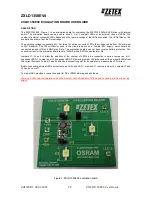
Chapter 1: Introduction
1-11
Introduction
Environmental Temperature Control
The thermal control sensor monitors the CPU temperature in real time and
will turn on the thermal control fan whenever the CPU temperature exceeds
a user-defined threshold. The overheat circuitry runs independently from
the CPU. It can continue to monitor for overheat conditions even when the
CPU is in sleep mode. Once it detects that the CPU temperature is too high,
it will automatically turn on the thermal control fan to prevent any overheat
damage to the CPU. The onboard chassis thermal circuitry can monitor the
overall system temperature and alert users when the chassis temperature
is too high.
CPU Fan Auto-Off in Sleep Mode
The CPU fan activates when the power is turned on. It continues to operate
when the system enters Standby mode. When in sleep mode, the CPU will
not run at full power, thereby generating less heat.
CPU Overheat LED and Control
This feature is available when the user enables the CPU overheat warning
function in the BIOS. This allows the user to define an overheat tempera-
ture. When this temperature is exceeded, both the overheat fan and the
warning LED are triggered.
System Resource Alert (*via Supero Doctor III)
This feature is available when used with Intel's LANDesk Client Manager
(optional). For example, if the system is running low on virtual memory and
there is insufficient hard drive space for saving the data, you can be
alerted of the potential problem.
Auto-Switching Voltage Regulator for the CPU Core
The auto-switching voltage regulator for the CPU core can support up to
20A current and auto-sense voltage IDs ranging from 0.83V to 1.63V. This
will allow the regulator to run cooler and thus make the system more stable.
















































